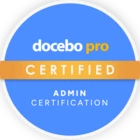So, we have established a successful instance of SSO for our EE agency. One of their requests is that we only show the SSO button on the login screen. Sure, no problem, that is a setting. Well, now I, a superadmin, cannot login to their domain. Is there a workaround for this? I mean, other than having the client build me an account in Azure, but that isn’t going to happen.
Answer
Extended Enterprise: Logging into an Extended Enterprise while SSO is Enabled
Best answer by KMallette
Regards,
KM
Log in to Docebo Community
Enter your email address or username and password below to log in to Docebo Community. No account yet? Create an account
Docebo Employee Login
or
Enter your E-mail address. We'll send you an e-mail with instructions to reset your password.







